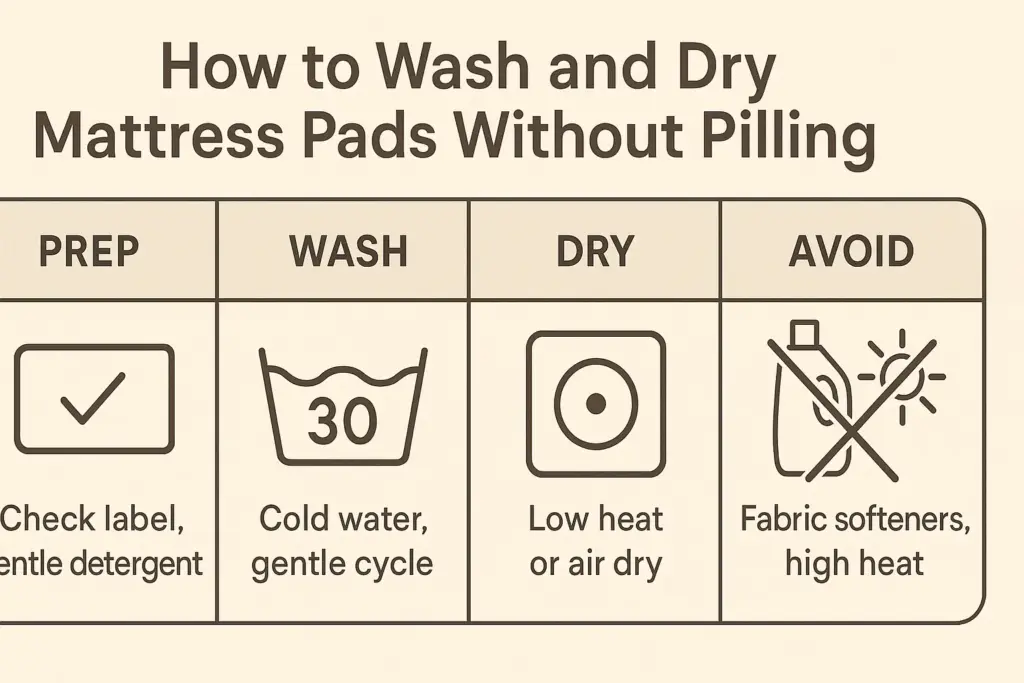Mattress pads play a key role in improving sleep quality by adding an extra layer of comfort and protection to your bed. But over time, frequent washing or improper care can cause them to pill—those annoying tiny fabric balls that make the surface rough and less breathable. In this guide, we’ll walk you through the best way to wash and dry mattress pads to keep them soft, clean, and pill-free for years to come.
Why Do Mattress Pads Pill?
Pilling happens when loose fibers on the fabric’s surface tangle and form tiny balls due to friction, often during washing and drying. This is especially common with synthetic materials or blends like polyester or microfiber. While pilling doesn’t affect functionality, it can reduce comfort and appearance.
Step-by-Step Guide: Washing Your Mattress Pad
1. Check the Care Label
Always start by reading the manufacturer’s label. Some mattress pads are machine washable, while others require spot cleaning or dry cleaning.
2. Use a Gentle Detergent
Choose a mild, liquid detergent that’s free of bleach or harsh chemicals. Powder detergents can leave residue that contributes to friction and pilling.
3. Select Cold or Warm Water
Use cold or lukewarm water on a gentle cycle. High temperatures can damage synthetic fibers and cause pilling or shrinkage.
4. Wash Separately or with Similar Fabrics
Avoid mixing mattress pads with rough items like towels or jeans. Wash with lightweight bedding to reduce abrasion during the spin cycle.
Drying Tips: Prevent Shrinking and Pilling
1. Air Dry When Possible
The best way to preserve your mattress pad is to air dry it. Lay it flat or hang it up to dry naturally.
2. Use a Dryer with Caution
If using a dryer, set it to low heat or air-dry mode. Toss in a few dryer balls to reduce friction and drying time. Avoid over-drying, which can weaken fibers and lead to pilling.
3. Fluff and Inspect
Once dry, shake out the mattress pad to fluff it up and check for signs of wear. If needed, use a fabric shaver to gently remove any pills that may have formed.

Bonus Tips for Long-Term Care
- Consider using a thin, easily washable mattress protector on top of your mattress pad. This way, you primarily wash the protector, reducing wear and tear on the pad itself.
- Avoid fabric softeners—they can coat the fabric and actually cause more pilling over time.
- Spot clean spills promptly to reduce washing frequency.
Final Thoughts
Washing and drying your mattress pad properly can significantly extend its lifespan and maintain its comfort. By using the right techniques and avoiding common mistakes, you’ll prevent pilling and keep your bedding fresh and soft.


Leave a Reply